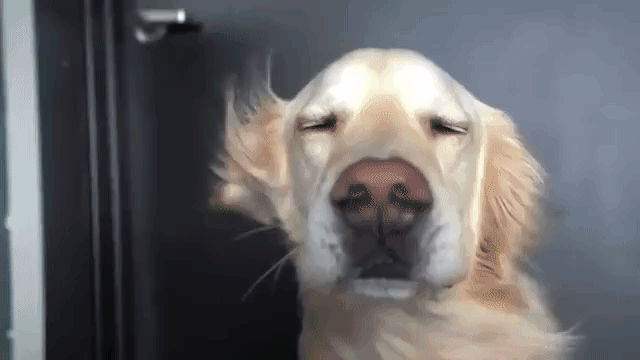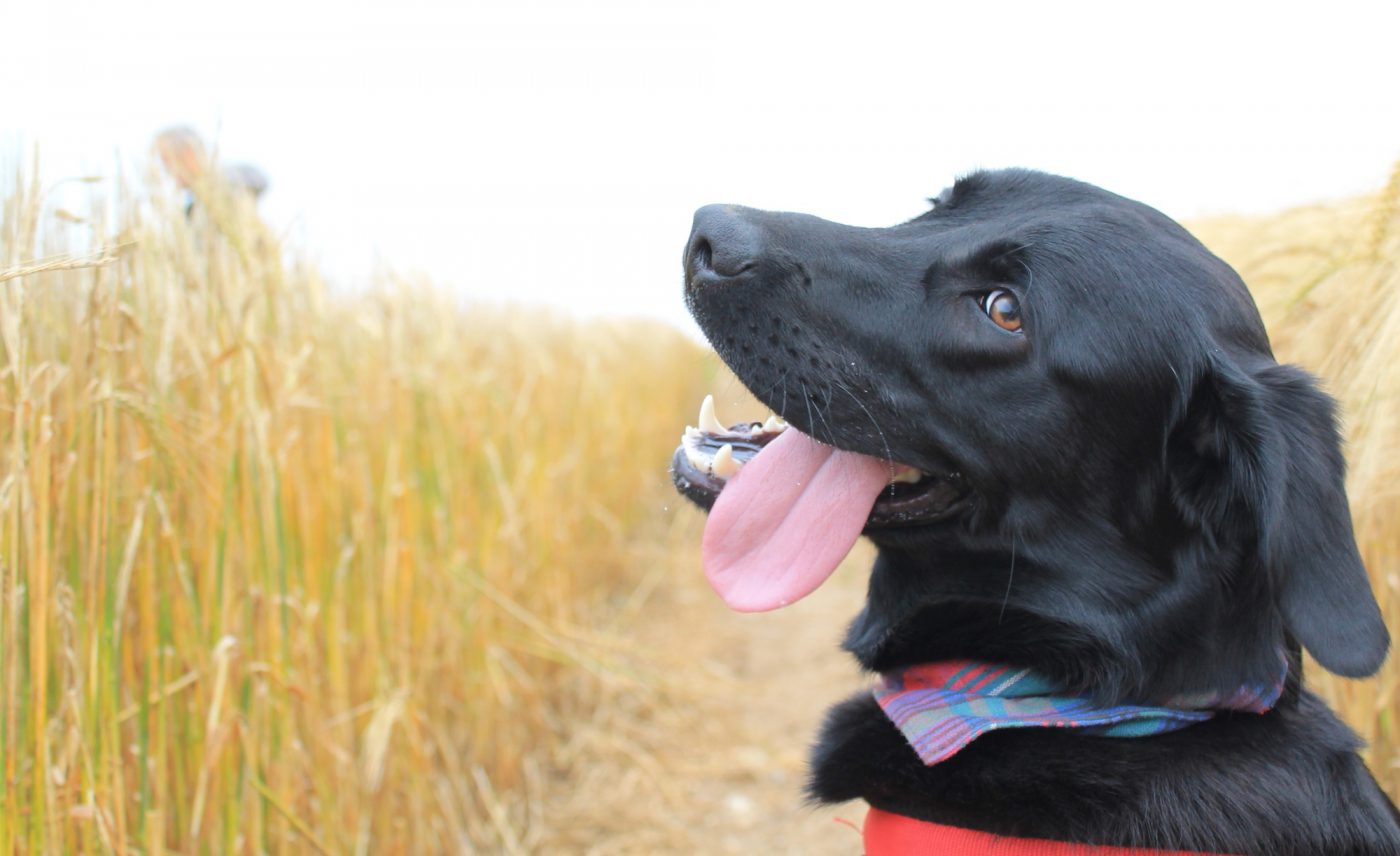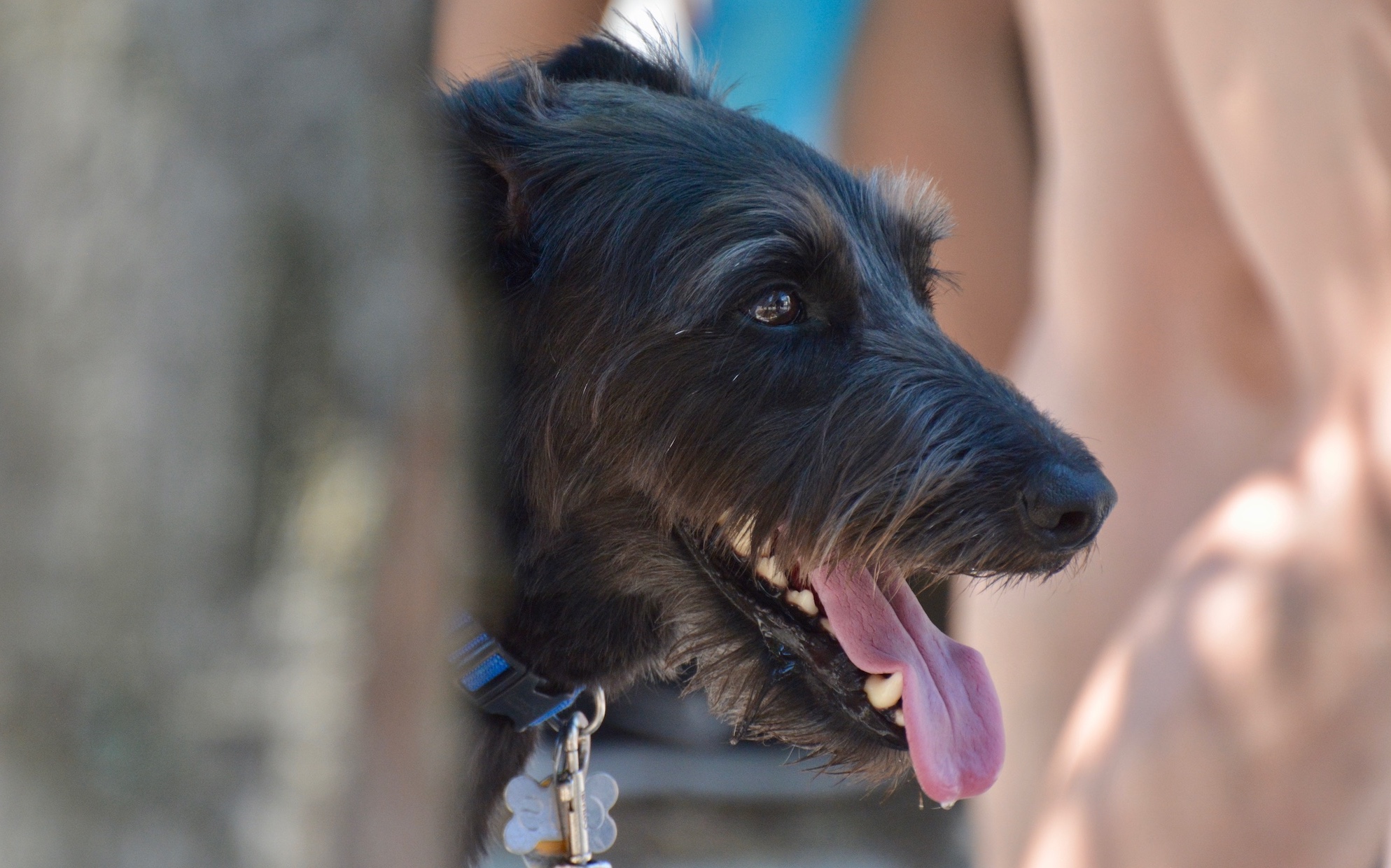- A recent study indicates that climate change is affecting dogs, too, with heavier dogs, and certain breeds at higher risk.
- Dogs can’t dissipate heat as well as we can, so heat and humidity can be dangerous.
- Signs of overheating include excessive panting, drooling, and dark red gums.
- Heatstroke can happen even when your dog is not running around. Don’t keep your dog outside in hot weather. Keep walks short. And NEVER leave your dog in a parked car.
- Don’t shave your double-coated dog! Their coat is designed to keep them warm AND cool.
At the first sign of warmer weather, people are clamoring to get outside. People with hiking and camping—or just walking—on their minds take to the outdoors, many with their dogs in tow. And while most dogs love to get out into nature, or just take a long walk through a city park, exercising in warm weather can put them at risk for heatstroke.
Just as humans can become overheated, so can dogs. In fact, a U.K. study suggests that as climate change presents a growing risk to humans, rising temperatures are putting dogs at increased risk of heatstroke.
Read more on summertime care for dogs:
How To Road Trip With Your Dog
Keeping Your Dog Safe During Fireworks
Fruits Your Dog Can (and Can’t) Eat
Researchers studied data from 900,000 veterinary visits in 2016 and found 395 confirmed “heat-related illness events.” According to the study, age, weight, and skull shape were the biggest risk factors for heat illness. Dogs over 110 pounds, regardless of breed, and over twelve years old, were more likely to suffer from the heat, and so were brachycephalic breeds (dogs with shortened snouts and flat faces) including English bulldogs, Cavalier King Charles spaniels, French bulldogs, and chow chows. According to the study findings, these breeds were twice as likely to suffer heat illness compared to beagles, border collies and other dogs with longer snouts. The study also noted that animal welfare organizations in the U.K. and Australia have reported increasing numbers of calls related to heat in recent years.
If you’re heading into summer, or live in a warm climate, here’s what to keep in mind about keeping your dog cool.
Feeling the heat: what to look for
Dogs can be more prone to overheating than humans because canine bodies are not as efficient at releasing excess heat as human bodies. While humans have the ability to sweat from head to toe to cool their skin, dogs only do their version of sweating through their paw pads. Panting is the main way dogs release heat from their bodies, but this method of inner cooling can become overwhelmed when they’re over-exposed to hot weather.
How can you know if your dog is getting too hot? Here are signs of a dog who is becoming overheated:
- Panting more heavily than usual
- Looking for shade
- Continuously lying down, excessive tiredness or lethargy
- Drinking a lot of water
- Dark or bright red gums
If you don’t take steps to cool your dog down when you see signs of overheating, your dog’s condition can progress to heatstroke. The signs of heatstroke are dramatic:
- Frantic panting
- Drooling
- Rapid heart rate
- Vomiting/diarrhea with blood in it
- Collapse
As heatstroke worsens, your dog may develop dilated pupils, lack of coordination, or even seizures. Body temperatures above 103°F are a warning sign of overheating; a temperature 106°F and above, when it’s not associated with another illness, means they’re experiencing heatstroke.
A dog can die from heatstroke, or suffer permanent organ damage, so heat and humidity should be taken seriously. Keep in mind that even if it doesn’t feel excessively hot to you, if the humidity is high, there’s a risk of overheating. Keep an eye on not only the air temperature, but the humidity, length of sun exposure, the temperature of the pavement, and water consumption.
Avoiding Heatstroke
The best way to keep your dog from venturing into the danger zone of heatstroke is to always be aware of the temperature, your dog’s exertion level, and hydration.
Dogs can dehydrate quicker than you might think, so make sure your pup has plenty of clean, cool water available at all times, and make sure they’re taking the time to drink. Try feeding some healthy, water-packed fruit snacks like watermelon and berries (in moderations). And your dog’s daily diet can also play a role in hydration—fresh food provides more natural moisture than dried balls of kibble.
Dogs who are playing or hiking in hot, or even warm weather are at risk of becoming overheated. This is especially true for dogs who are overweight, or have dark-colored fur. Excess weight makes it hard for a dog to keep their body temperature down, while dark-colored fur attracts the heat of the sun. Dogs who aren’t acclimated to hot weather may also be at additional risk of overheating. Give your dog breaks from walking, and offer them shade and cool water. Don’t push them to exercise if it’s hot outside, especially if they’re older.
While brachycephalic breeds are more prone to overheating, even dogs who might be considered athletic, or who love the outdoors and ample exercise, like golden retrievers and German shepherds, should be closely monitored on hot days. The U.K. study found that greyhounds had higher susceptibility to heat which may be due to their higher ratio of muscle. If your dog is a ball maniac who becomes obsessed with playing to the point where they don’t want to stop, keep a close eye on their behavior when the weather is warm. Are they panting more heavily than usual? Are they drinking more water than usual when playing? If so, have your dog take a break. Make them rest in the shade until panting slows or ceases.
Even if your dog is usually active, avoid strenuous activity when it’s hot or humid. Opt for exercise early in the morning or late in the day when the temperature is cooler.
Dogs can also be susceptible to heatstroke even if they aren’t being active. Dogs kept outdoors on very hot days without access to shade or water can become dangerously overheated. Keep your dog indoors as much as possible on days where the temperature exceeds 85°F. If you’re venturing out for a walk in those temperatures, don’t keep your dog out for more than 15 minutes. If you have to be outside on hot days for longer than that, make sure your dog has access to ample shade, or can splash in a sprinkler or pool.
Consider the ground temperature! This is easy to overlook, but paved surfaces can get intolerably hot—even hotter than the air temperature. Put the back of your hand on the ground to test it out—if you can’t stand it for more than 5-10 seconds, it’s too hot, so ensure your dog doesn’t have to stand on it for any length of time. Your dog can burn their paws, and the heat rising from the ground can contribute to overheating a low-slung pet.
And of course, leaving a dog in a car in warm weather—even for a short time— is exceedingly dangerous. The greatest number of canine heatstroke cases in the U.S. are the result of dogs being left in hot cars, according to the American Kennel Club. For this reason, many states have laws allowing bystanders to break car windows to rescue dogs locked in hot cars. Never leave your pet alone in a car when it’s warm out, even for a short time.
Cooling down a hot dog
If your dog is showing signs of heat exhaustion, get them out of the heat right away. Put them in the shade and run cool water on them, or put a wrapped cold-pack or towel soaked in cool water against their body, near the groin region or neck. If you’re putting them in water, be sure it’s not ice cold, as it could lower their temperature too much, and don’t submerge their head in water. Pointing a cooling fan at them is also a good idea.

If you suspect heatstroke, take them to a veterinarian right away. Even if you feel you’ve cooled your dog down, you should seek medical attention as the full health impact may not show up right away. Dogs who have experienced heatstroke generally need hospitalization for fluid therapy and medication.
Besides giving them breaks in the shade and plenty of cool water to drink, here are some other ideas for helping active dogs stay cool on hot days.
- Cooling apparel: Your pet supply retailer can be a source for several products made specifically to keep dogs cool. Cooling vests provide both protection from the sun and evaporative cooling. You soak the vest in water, wring it out and put it on your dog. Bandanas or cooling collars that fit around your dog’s neck after being soaked in water can also help keep them keep cool. Some of these neck wraps come with re-freezable ice packs to enhance their cooling properties. Cooling mats are another option. Made from a cooling gel, they can provide a good spot for your dog to lie down and rest on hot days
- Water spray: Visit any outdoor canine competition in the summertime and you’ll see handlers misting down their dogs with spray bottles. Filling a spray bottle with ice water and misting your dog’s head, neck and body can help them cool down. Some people spritz their dog’s paw pads too. The only caveat is that your dog may not like all this misting, especially at first.
A word about grooming
While you may be tempted to shave your dog’s hair off to keep them cool in the summer, the truth is that you may make them more prone to heatstroke if you do. As counterintuitive as this may seem, canine coats are designed to provide protection from the heat—and that includes the thick, double coats of huskies, Australian shepherds, golden retrievers, border collies, corgis, Pomeranians, and many others. Double coats consist of guard hairs and an undercoat that offers insulation in cold weather. Unless shaving is recommended by a vet because of a medical condition or heavy matting, skip the clippers and opt for a trim instead. The natural shedding process allows the undercoat to shed which allows for airflow (cooling through convection) near the skin while keeping the guard hairs long to offer sun protection. Give your dog a thorough brushing to help remove any excess hair that wants to shed out. Nature gave your dog a summer coat that keeps them cooler, so you’ll see plenty of shedding in the spring. The hair that remains when the warm weather hits is the hair your dog is meant to have. Shaving a double-coated dog can also have a negative impact on the coat as it regrows.
Even for single-coat breeds, like poodles, it’s a better idea to cut their hair instead of a too-close shave which can cause UV exposure and increased cancer risk in dogs, who have thinner skin than we do.
As the weather warms up, remember to keep a close eye on your dog during outdoor activities to make sure they’re not getting overheated. If in any doubt, err on the side of caution and give your dog a rest in the shade, no matter how much they still want to play. And of course, never leave them alone in the car, even for a few minutes, during warm weather—or anytime.
This article was vetted by vets.
Reviewed by: Deepti Johar, DVM;
Alex Schechter, DVM, and founding veterinarian at Burrwood Veterinary. He was previously founding veterinarian at Pure Paws Veterinary Care.










